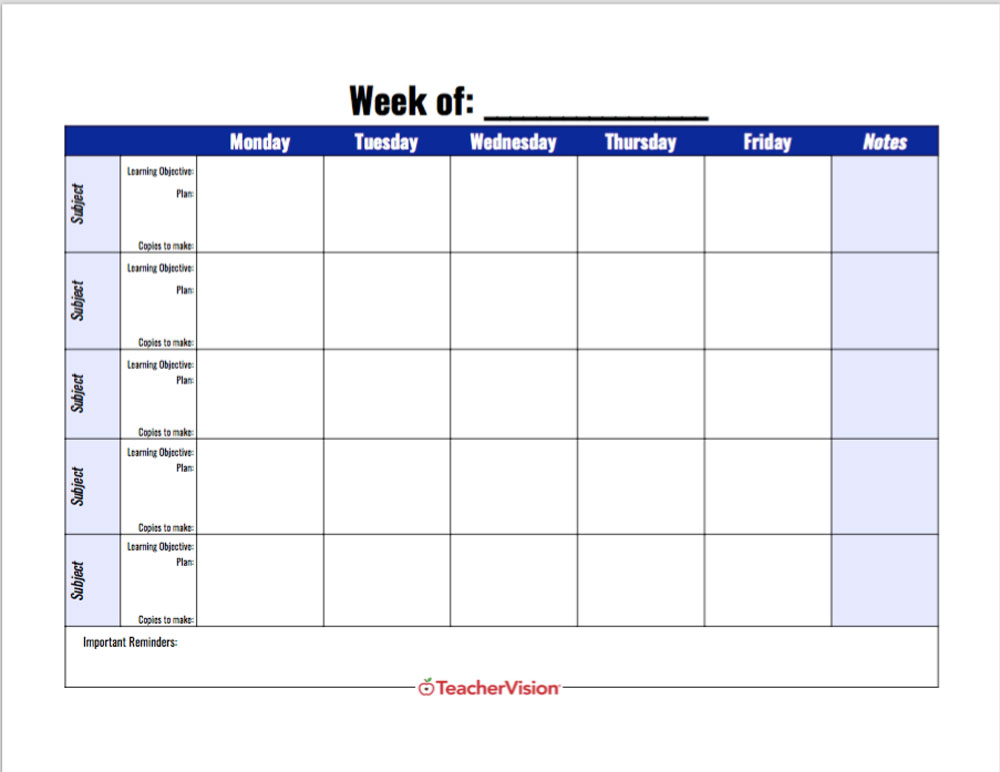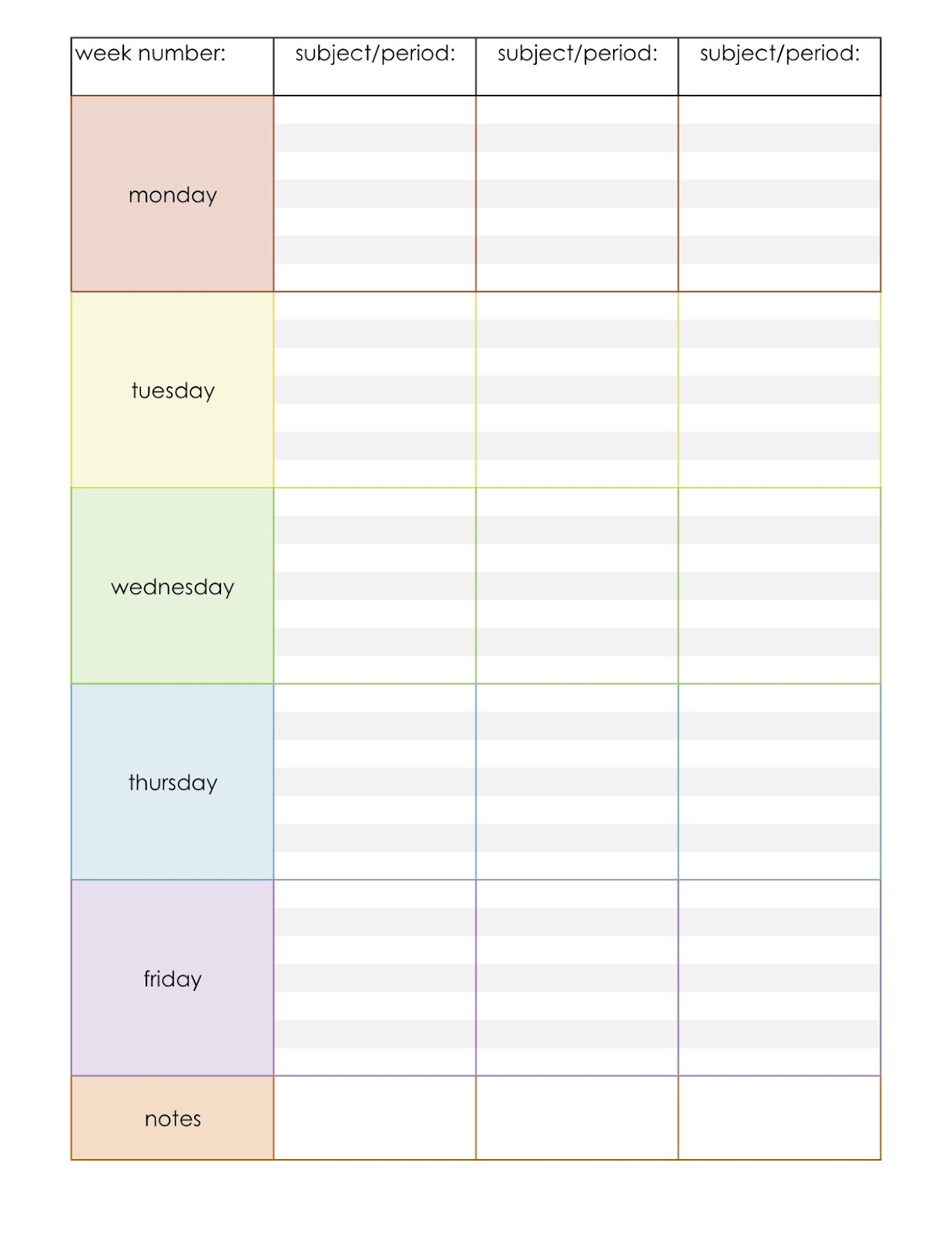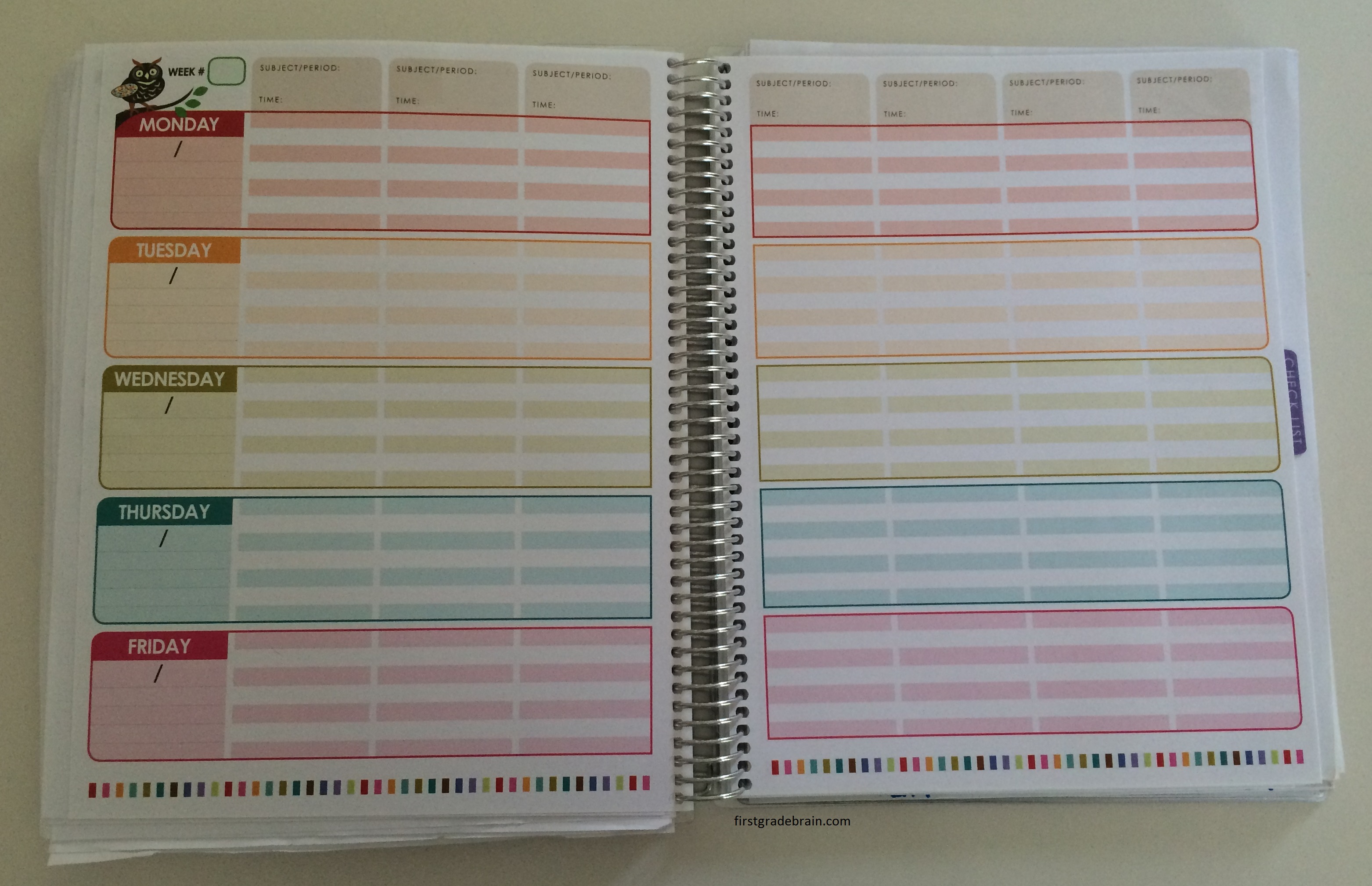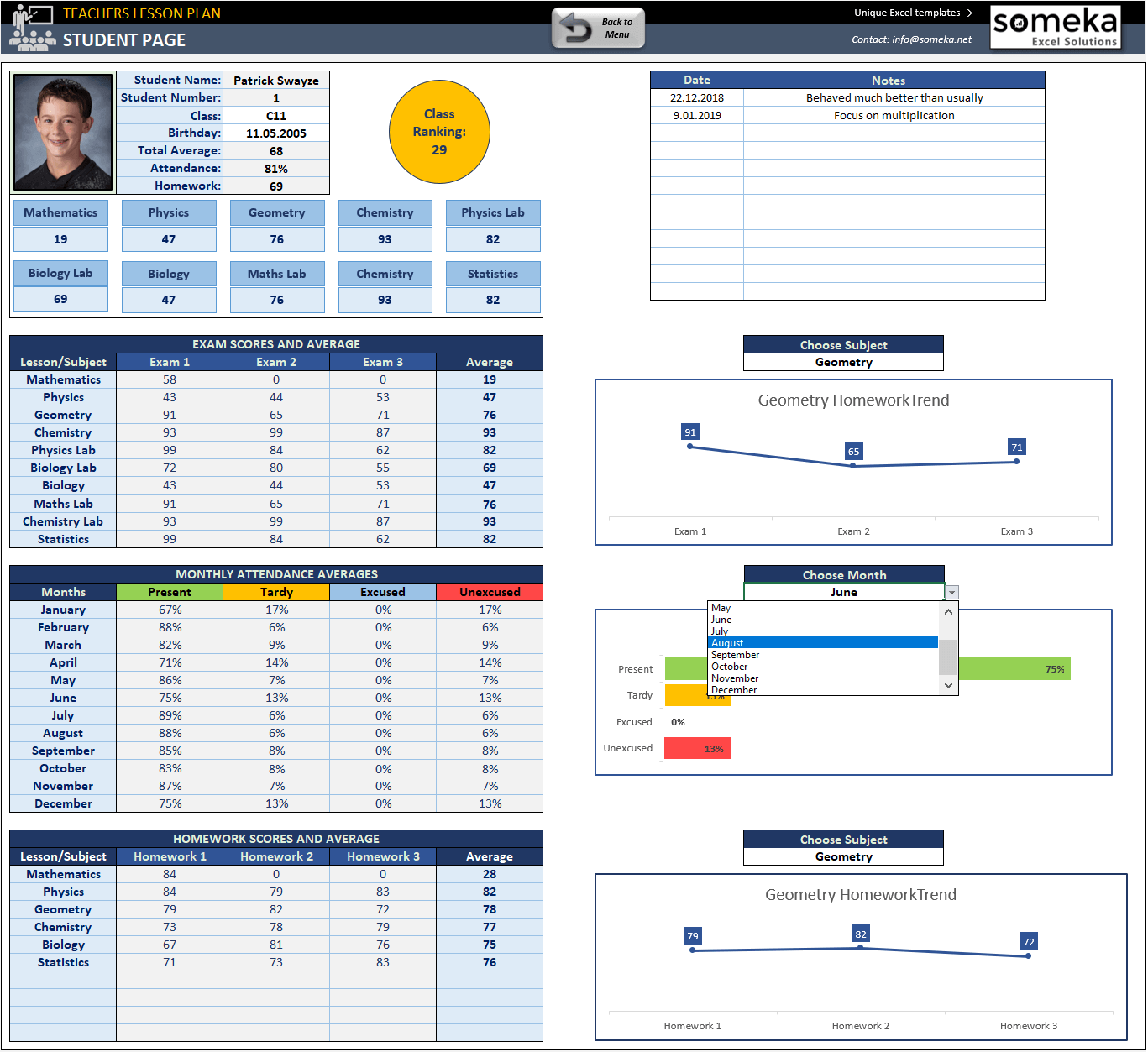

Having all of this information together in binder makes it much easier to stay organized and find info quickly. Planning is about much more than just lessons: you need to keep schedules, transportation lists, field trip forms, seating charts, student passwords, etc. 2) Use an editable teacher binder/planner for everything besides your actual lessons I have not read any major complaints about either platform from teachers and feel very confident recommending them. But and seem to be the most popular, and are user-friendly.
Classroom lesson planner free#
There is a free version of both platforms, but the $12/year plan is well worth it, because that’s what enables all the really valuable time-saving features like re-using lesson plans from year to year.Īre there other online lesson planning platforms out there which are good? Yes. So if you invest time in setting up your planbook this year, you’re going to have exponentially less work to do in future years when it’s time to plan–all you’ll have to do is adapt things for your current group of students. What I love about both and is that you can insert CCSS or other standards through a dropdown menu, and share lesson plans with team members or your admin digitally. Most importantly, you can re-use the same lesson documentation from year to year. I don’t know of any compelling reason to pick one over the other (though if you do, please let me know in the comments!) My personal recommendation and preference is to use a combination of digital and paper planning as follows: 1) Use or for formal lesson plan documentationĭespite the confusingly similar names, these are two completely separate companies/platforms. I have heard amazing things about both from teachers, and both seem to offer the same features. There will always be new and maybe even better options out there, but you can drive yourself crazy if you spend too much time worrying about that. If you already have a planner you love, stick with it! Don’t get caught up in FOMO (fear of missing out) and waste hours researching other options when you’ve already found a good system. The most important thing to remember is that every teacher’s needs are different: there is no one perfect planner that is right for every person. This post is not sponsored and is my completely unbiased opinion, based upon my own research and the experiences of hundreds of teachers I’ve discussed this with in The 40 Hour Teacher Workweek Club and other Facebook groups. Package content is not flexible and cannot be modified.I see questions about the best teacher planner asked approximately 3,427 times a day in July and August, so I thought I’d share a system that seems to work well for many teachers.

Please note that if your order ships in multiple boxes, package components may not all be in the same box. The package item number is also listed at the bottom of your packing slip for reference.
Classroom lesson planner code#
On your packing slip, package components are picked and packed individually and are identified with the code "PKGCMP" in the price column.

Any backordered components will ship separately as they become available. In-stock components will ship according to our normal shipping time. When you order a package, you are charged one price for all package items. Because most package items or components are also sold separately and may be components of multiple packages, these items may not have the same inventory availability at any point in time. Although packages are sets, items are not physically bundled together.

Any item sold as a package on our website is identified by a unique alpha-numeric item number (such as "APH1AB"). A listing of individual items that make up a package is provided on the package item's product detail page along with real-time item availability of those items. A "package" is made up of two or more items sold as a set, often for a reduced price.


 0 kommentar(er)
0 kommentar(er)
